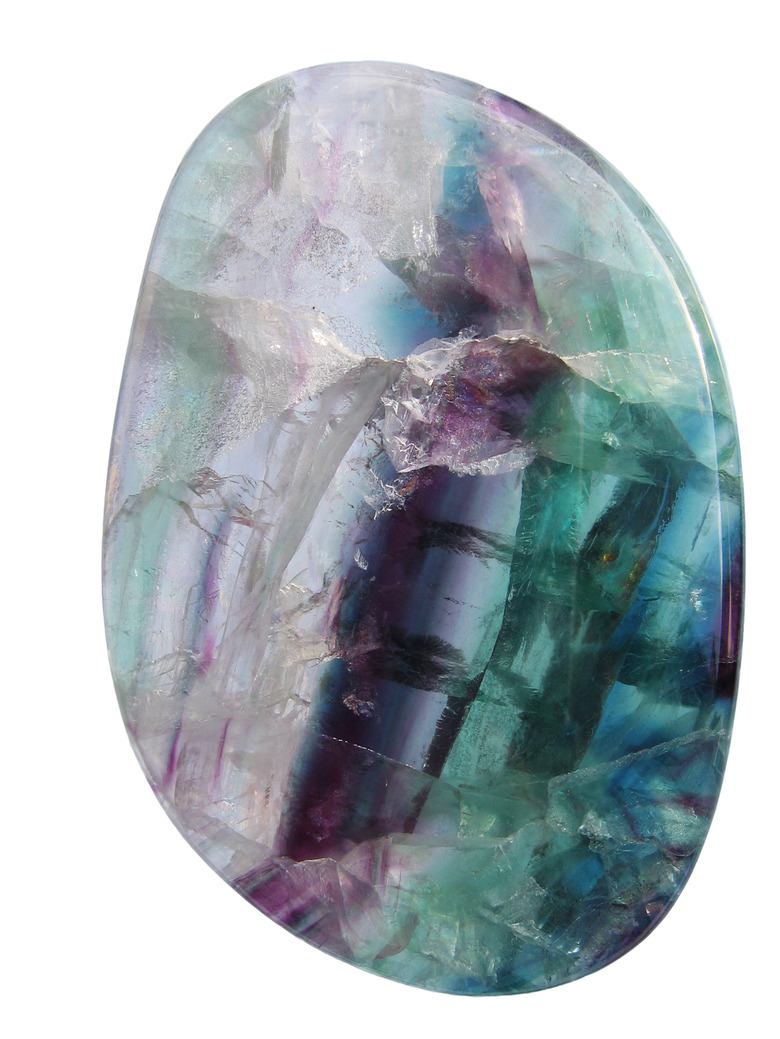How Can I Tell The Difference Between Fluorite & Quartz?
Quartz and fluorite are two similar-looking minerals that have very different atomic structures and compounds. Despite their differences, they are often found in the same locations, and sometimes fluorite even forms on quartz. Since they have a similar appearance and can be located together, a good way to tell the difference between minerals like quartz and fluorite is by testing their hardness. Scratching the surface of a stone with other objects is an easy way to determine what mineral it is.
What Is a Mineral?
What Is a Mineral?
Minerals are formed by pressure in the Earth, squeezing together different inorganic compounds to form a solid element. Each mineral is defined by its unique chemical composition and orderly, repeating internal atomic structure. Silicon is the most abundant mineral building block. Broadly, minerals are categorized as silicate, meaning they are primarily formed from silica, or non-silicate, which don't contain the chemical unit silicon.
Quartz Building Blocks
Quartz Building Blocks
Quartz is a silicate mineral and one of the most abundant in the Earth's crust. The base chemical that forms quartz is silicon dioxide. There are many types of quartz differentiated by trace minerals or imperfections, such as minor fractures within its structure. Pure quartz is transparent; however, colors range from dark purple, commonly known as amethyst, to yellow quartz, called citrine.
Fluorite Building Blocks
Fluorite Building Blocks
Fluorite, otherwise called calcium fluoride, is a non-silicate mineral with a calcium base. Due to impurities, fluorite also has a wide variety of colors from clear to shades of purple, blue, yellow or green. Some pieces of fluorite have a spectrum of colors and the ability to glow under ultraviolet lights.
Fluorite is also called a halide mineral, which means its atomic structure contains positively charged cations that are ionically bonded to halogen anions. In the case of fluorite, calcium and fluorine are bonded. Visually, halide minerals tend to have a symmetrical cubic structure, like table salt.
What Is Hardness?
What Is Hardness?
Hardness is a mineral's ability to resist scratches. Soft minerals, like talc, scratch very easily. Hard minerals are highly resistant to being scratched. The hardest natural mineral is diamond. Only diamond is hard enough to scratch diamond.
Using the Mohs Hardness Scale
Using the Mohs Hardness Scale
A standard method people have used for thousands of years for telling minerals apart is by testing their hardness. The official scale used for judging minerals' hardness today is the Mohs hardness scale. It was created by Frederich Mohs in 1812, a famous German geologist and mineralogist. The ratings on the Mohs hardness scale include everyday objects that can scratch the surface of a mineral. To work out the hardness rating, an object with a known hardness is dragged, with medium pressure, across the surface of the mineral in question.
As fluorite is classified as having a hardness rating of 4, this means its surface cannot be scratched by something with a 3.5 rating, like a copper penny, but it would be scratched by a knife or glass plate with a 5.5 rating. Quartz has a hardness rating of 7, so it withstands scratches from a 6.5-rated steel nail, but an 8.5-rated masonry drill bit would scratch the surface.
Quartz and Fluorite Hardness
Quartz and Fluorite Hardness
Another simple way to test a mineral's hardness rating is with other known minerals. For example, fluorite can only be scratched by minerals with hardness values higher on the Mohs scale, such as apatite, with a score of 5, or quartz, with a score of 7. Softer minerals such as calcite, gypsum and talc wouldn't scratch fluorite.
Likewise, quartz can only be scratched by minerals harder than it, such as topaz with a score of 8, corundum with a score of 9, or the hardest mineral of all, a diamond, which has a score or rating of 10 on the Mohs scale. Discovering which minerals are and aren't able to scratch the surface of an unknown mineral will help indicate what that unknown mineral is. For example, a piece of quartz will scratch the surface of a piece of fluorite, but never the other way around.
Cite This Article
MLA
Jerrett, Adrianne. "How Can I Tell The Difference Between Fluorite & Quartz?" sciencing.com, https://www.sciencing.com/can-difference-between-fluorite-quartz-7314399/. 20 October 2021.
APA
Jerrett, Adrianne. (2021, October 20). How Can I Tell The Difference Between Fluorite & Quartz?. sciencing.com. Retrieved from https://www.sciencing.com/can-difference-between-fluorite-quartz-7314399/
Chicago
Jerrett, Adrianne. How Can I Tell The Difference Between Fluorite & Quartz? last modified August 30, 2022. https://www.sciencing.com/can-difference-between-fluorite-quartz-7314399/
